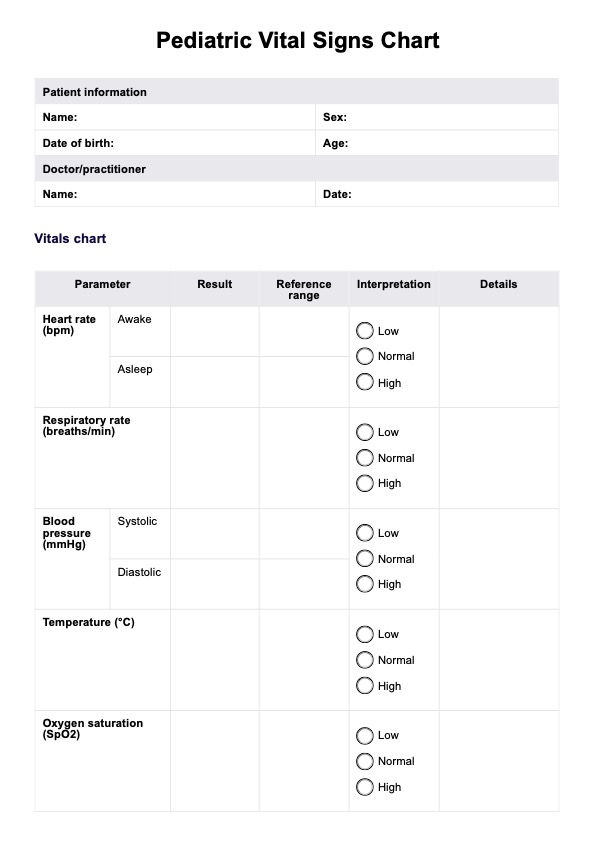The Pediatric Vital Signs Chart is designed to record and interpret a child’s key health parameters, including heart rate (awake and asleep), respiratory rate, blood pressure (systolic and diastolic), body temperature, and oxygen saturation (SpO2). It includes fields for results, age-specific reference ranges, and interpretations (low, normal, or high). This structured format ensures consistent and accurate documentation for comprehensive patient monitoring.

Pediatric Vital Signs
Access a free Pediatric Vital Signs Chart with Carepatron. Download this PDF for better clinical documentation.
Pediatric Vital Signs Template
Commonly asked questions
The Pediatric Vital Signs Chart provides fields for recording both systolic blood pressure (top number) and diastolic pressure (bottom number) during a blood pressure reading. These values are compared to normal blood pressure ranges specific to the child’s age and size. Proper blood pressure measurement, performed with an appropriately sized blood pressure cuff ensures reliable results and helps assess blood flow and cardiovascular health.
Children’s heart rate and normal respiratory rate vary significantly between awake and asleep states. The chart accommodates this variation by including fields to document both conditions alongside reference ranges. For example, a toddler’s awake heart rate range differs from their asleep range, ensuring a precise assessment relevant to their activity level and physiological state.
EHR and practice management software
Get started for free
*No credit card required
Free
$0/usd
Unlimited clients
Telehealth
1GB of storage
Client portal text
Automated billing and online payments











